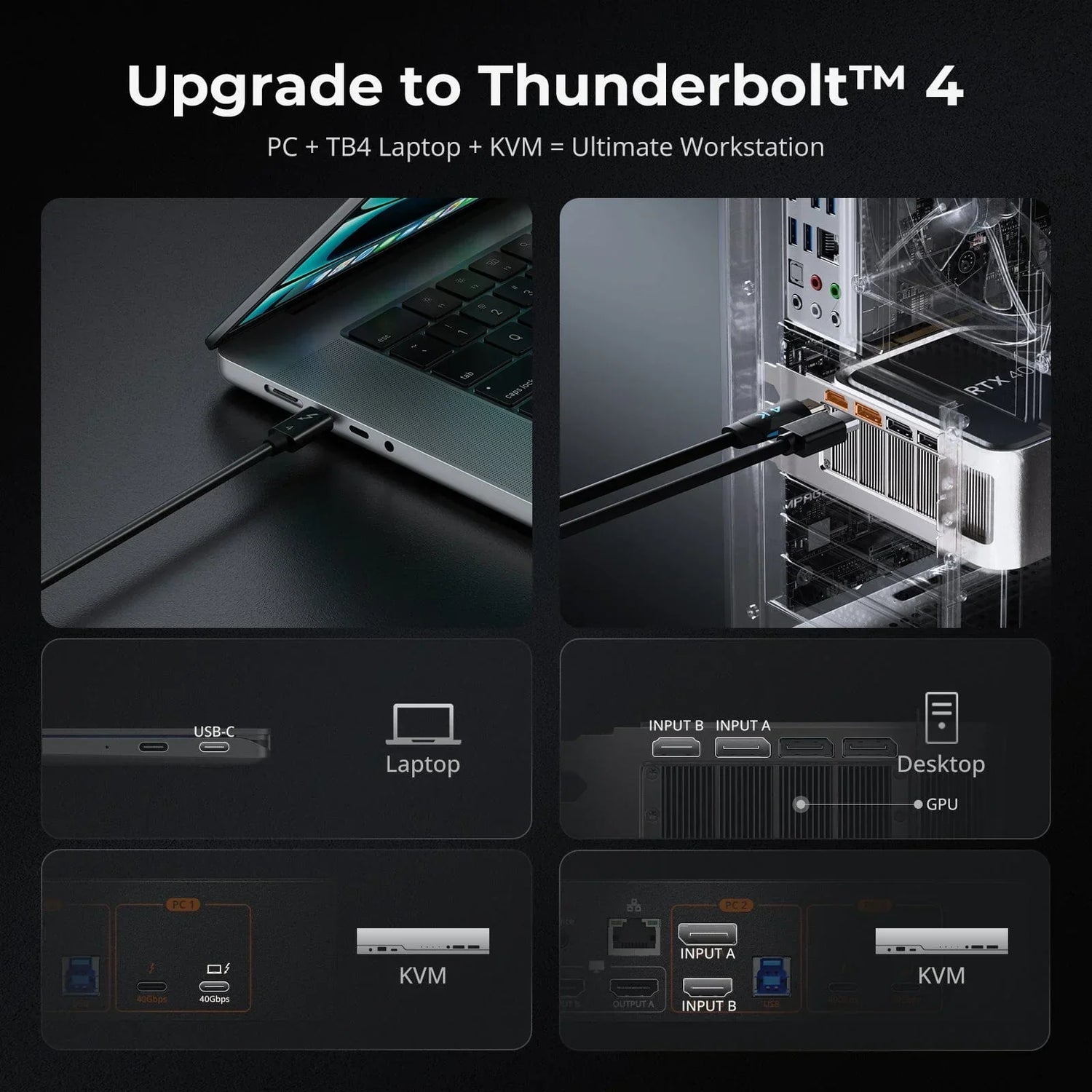Display Stream Compression (DSC) is a video compression algorithm that enables the transmission of high-resolution video signals over display interfaces without a significant loss of quality. It enhances the performance of HDMI and DisplayPort cables, enabling them to support displays with higher resolutions and refresh rates than their original capabilities.
The purpose of DSC is to lessen the amount of data sent from a source device, such as a gaming PC or UHD Blu-ray player, to a TV or monitor. This allows DisplayPort 1.4 to handle 4K@240Hz displays, even though the cable itself doesn't have the necessary raw bandwidth to support that resolution and refresh rate combination without compression.
The Development of Display Stream Compression
Display Stream Compression (DSC) was introduced by the Video Electronics Standards Association (VESA) as part of the DisplayPort 1.4 standard, which was published in March 2016. This inclusion marked the formal adoption of DSC for mainstream use in high-resolution display technology.
Later on in 2017, the HDMI Forum announced HDMI 2.1, which also incorporated DSC. HDMI 2.1 supports resolutions up to 10K with DSC, making it a crucial technology for future-proofing high-resolution displays.
Nowadays, adoption of DSC grows as device manufacturers begin integrating it into new monitors, TVs, laptops, and other display devices to support 4K, 8K, and higher resolutions with high refresh rates.
*DSC can also be used by USB-C, USB4, and Thunderbolt 3/4 connectors to transmit higher-quality video than their bandwidth would allow.
How Does DSC Work?
Display Stream Compression (DSC) is a mathematically lossy but visually lossless compression algorithm. This means that although there are some differences in the final image produced after compression, these differences are imperceptible to the human eye. DSC employs various encoding tools to achieve this and can deliver a 3:1 reduction in data size. It accomplishes this with only a 0.5-microsecond increase in overall latency, making it suitable for gaming without affecting the visual experience or gameplay.
With DSC, HDMI 2.1 can support up to 10K resolution at 120Hz (when combined with chroma subsampling), and DisplayPort 2.1 can handle a single 16K display at 60Hz with 10-bit color and HDR theoretically.
However, it's crucial to note that DSC only compresses the data transmitted from the device to the display. It doesn't assist your graphics card in the same way technologies like FSR or DLSS do. Therefore, you'll still need a powerful GPU capable of rendering your games at the desired resolution and frame rate, regardless of whether DSC is used.
Key Features of DSC
Visually Lossless Compression It ensures that any differences in the image after compression are imperceptible to the human eye.
High Compression Ratios It can reduce data size by up to 3:1, significantly lowering the bandwidth needed for transmission.
Real-Time Performance It adds only a minimal latency (0.5 microseconds), making it suitable for applications like gaming.
Compatibility with Various Standards It supports DisplayPort 1.4 (or higher), HDMI 2.1 (or higher), and USB-C with DisplayPort Alt Mode (including Thunderbolt 3 and 4).
DSC and Graphics Cards
To use DSC, both your graphics card and monitor must support the technology.
Typically, if your graphics card detects a compatible display that supports DSC, it will automatically enable the feature. However, verifying DSC support can be challenging as manufacturers like Nvidia and AMD may not explicitly list DSC capabilities on their product pages.
If you're purchasing a new graphics card and want to ensure DSC functionality, you should:
- Assess Your Setup
Check your monitor and any intermediary devices (e.g., adapters, KVM switches) for DSC support.
- Define Your Requirements
Determine what you need from your setup, such as 4K@120Hz 4:4:4 HDR or 8K@60Hz 4:2:0 VRR.
- Verify Device Compatibility
Ensure all current devices in your setup meet your standards. Contact the graphics card manufacturer to confirm that the model you intend to purchase supports DSC.
DSC and Game Consoles
For PC gamers, investing in a suitable graphics card to meet high performance needs is straightforward. However, for console gamers, DSC support varies:
PlayStation 5 It does not support DSC. Its HDMI 2.1 port supports up to 32Gbps bandwidth, not the full 48Gbps.
Xbox Series X It's unclear if DSC is supported. However, the console can achieve resolutions up to 4K@120Hz 4:4:4 16-bit.
Nintendo Switch Similar to other consoles, DSC support details are often not explicitly stated.
KVM Switches Supporting DSC
When you have your ideal graphics card and a top-tier gaming display, and you want to complete your setup with a KVM switch to share peripherals between your PC, laptop, and game consoles, choosing the right KVM switch is crucial.
As noted, all devices in your setup, including the KVM switch, impact overall performance. If the KVM switch doesn’t support the required resolutions or DSC, you’re not fully utilizing your graphics card and display, and your investment is wasted.
TESmart released our 8K KVM switches supporting DSC, all also featuring advanced EDID emulation technology for flawless video output. It’s all compatible with Nvidia and AMD graphics cards, ensuring stable, tear-free, and ghost-free gaming visuals. More are supported here:
- 8K(4320p)@60Hz
- 4K(2160p)@60Hz
- 4K(2160p)@120Hz
- 4K(2160p)@144Hz
- 4K(2160p)@165Hz
Conclusion
In conclusion, Display Stream Compression (DSC) is a game-changer for getting the most out of your high-resolution and high-refresh-rate displays. Essentially, DSC allows you to enjoy higher bandwidth video experiences even when your device's actual bandwidth is limited. By ensuring your graphics card, monitor, and KVM switch all support DSC, you can achieve top-tier visual performance without being bottlenecked by bandwidth constraints.





